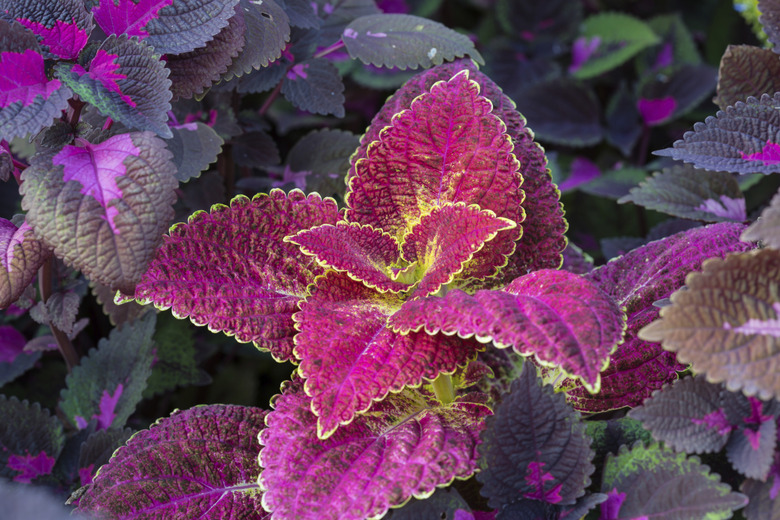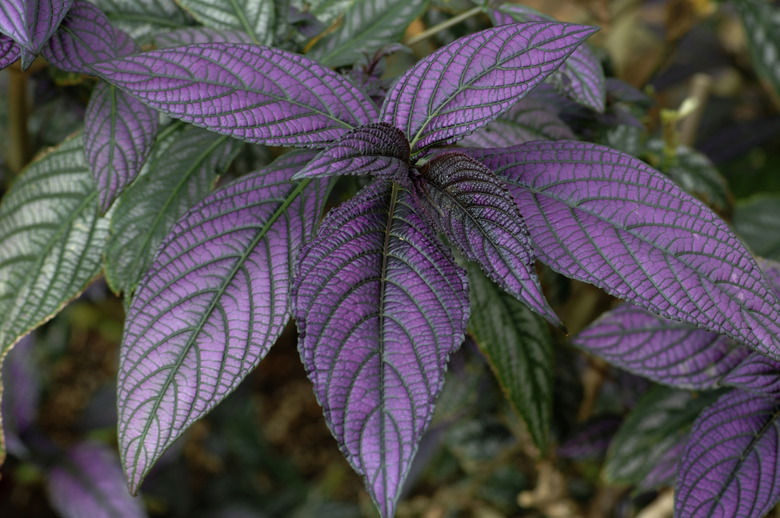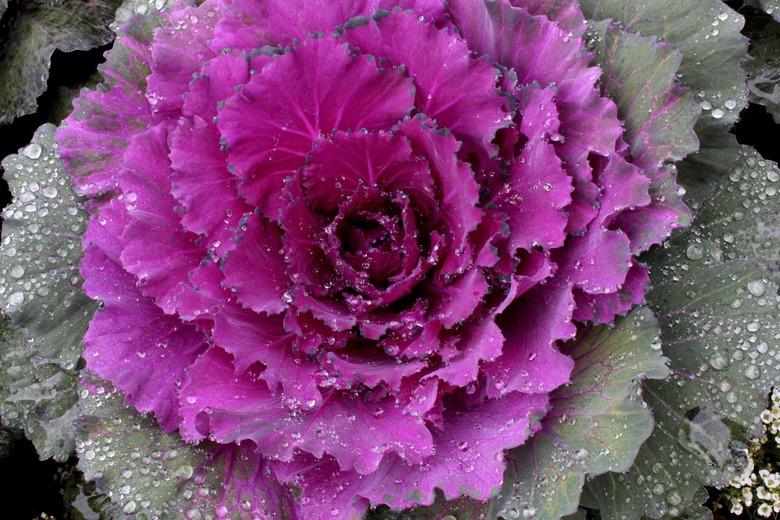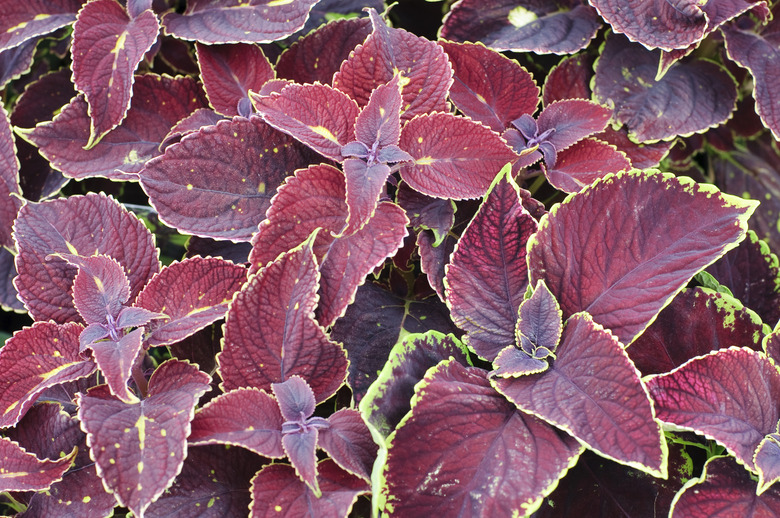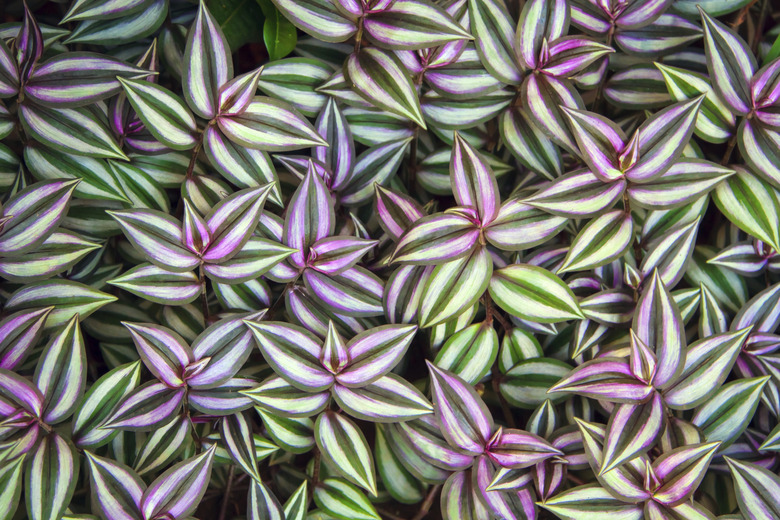List Of Plants With Purple & Green Leaves
Purple is traditionally associated with royalty and can lend a royal air to the garden as well. There are many plants with purple and green leaves. When planning the landscape, use purple foliage together with yellow or white flowers for extra impact. Avoid pairing purple foliage with red flowers as that combination tends to clash.
Persian Shield (Strobilanthes dyerianus)
Persian Shield (Strobilanthes dyerianus)
Persian shield is a spectacular foliage plant with iridescent leaves of purple, silver and green. Place it with yellow flowers for a "wow" effect. Pinch back the buds to stimulate branching and create a bushier plant. Plan for a height of 2 or 3 feet and space about 2 feet apart. Persian Shield prefers morning sun and afternoon shade. In the house, keep it in bright light. In most gardening zones it will be an annual plant although it may last all winter in zones 9 to 11.
Oyster Plant (Tradescantia spathacea)
Oyster Plant (Tradescantia spathacea)
The thick clumps of spear-shaped leaves make the oyster plant an excellent border or ground cover plant. The leaves are purple underneath and green and purple striped on top. Oyster plant spreads from the roots forming thick clusters. It's small, growing only 6 to 12 inches high. In sub-tropical and tropical zones Oyster plant is considered an invasive pest that escapes into wetlands and crowds out native plants so avoid using it in zones 9b to 11.
Ornamental Cabbage (Brassica oleracea)
Ornamental Cabbage (Brassica oleracea)
A terrific accent plant or border plant, the ornamental cabbage with thick, frilly leaves in unusual color patterns catches the eye. The leaves form loose rosettes, rather than compact cabbage heads. Color patterns are purple-red and green, green and white and solid purple-blue and are most vivid in cool weather (below 60 degrees Farenheit) so it is often used in spring and fall in moderate climates and in winter for sub-tropical and tropical zones. It grows about about a foot tall and up to 18 inches wide. Place it in full sun.
Coleus
Coleus
Coleus is a popular houseplant, hanging basket and summer landscaping plant. Many varieties are available in various shades. The "Fishnet" variety has lime green leaves with deep purple veins. "Pat Martin" features burgundy leaves with lime green edges. "Thumbelina" is compact with reddish-purple and green leaves. Coleus grows in all gardening zones from spring until the first frost. It grows from 1 to 3 feet tall and up to a bushy 3 feet wide. Well drained soil is essential as coleus is susceptible to root rot. Coleus roots easily by placing cuttings in water.
Wandering Jew (Tradescantia zebrine)
Wandering Jew (Tradescantia zebrine)
A beautiful groundcover with purple and olive green striped foliage is Tradescantia, sometimes called wandering Jew. This plant grows 6 to 12 inches tall, but trails across the ground in a prostrate form. The flowers are small and pink or white; however, the foliage is the main attraction of this plant. Tradescantia can be used outdoors in zones 9 to 11 and indoors anywhere. It roots easily from cuttings.
